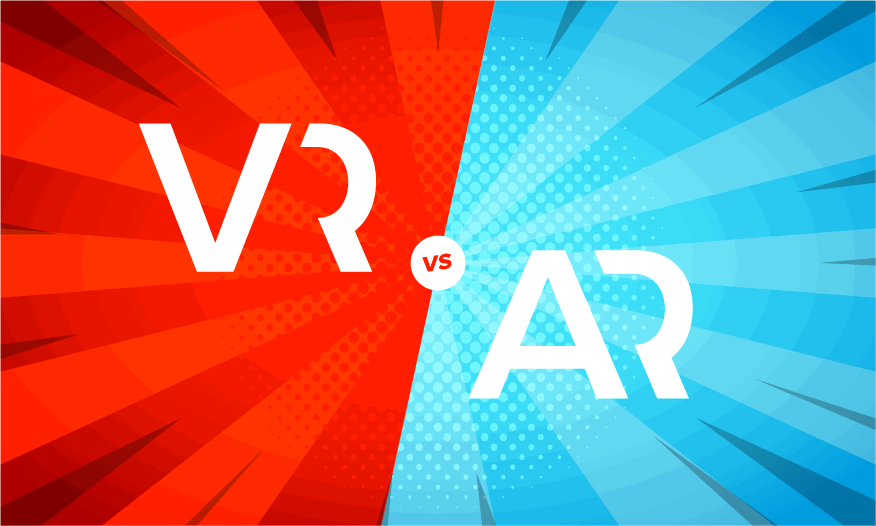
What's the distinction between AR and VR? Both technologies are gaining intense interest in their marketing, gaming, brand growth, and entertainment opportunities. Nearly 90 percent of businesses with annual sales of between $100 million and $1 billion now use augmented reality or virtual reality technologies, according to recent research by Deloitte. Let's look at the parallels between these two technologies and some recent examples of how marketing, customer service, and brand building are being used to strengthen them.
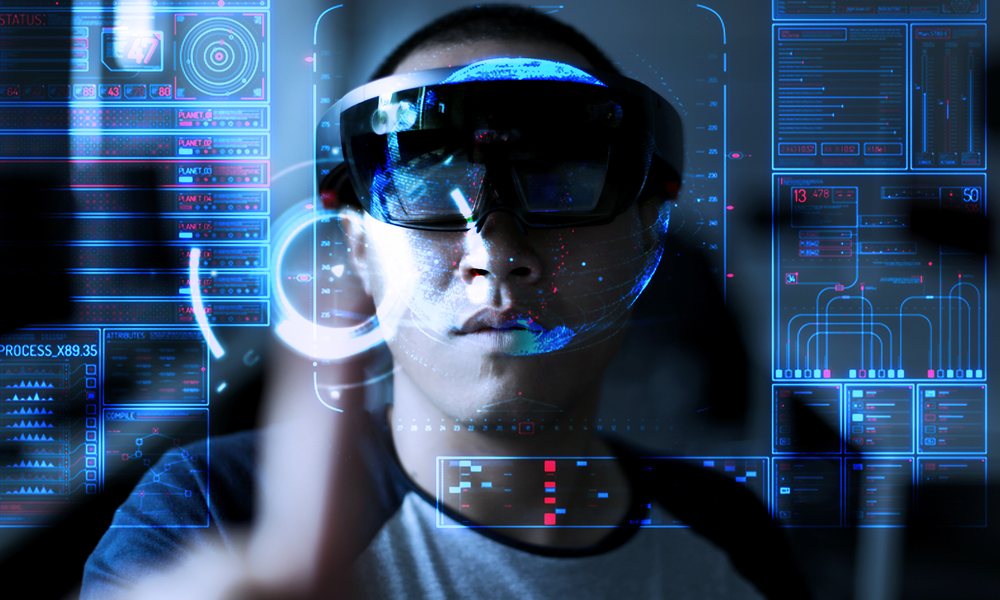
Virtual reality (VR) immerses individuals, often with a lot of costly hardware such as headsets, in encounters. Augmented reality typically begins with a real-life view of something (such as a cell phone's camera) and projects or adds images onto the computer or audience.
The appeal is obvious. Both offer a creative way to immerse clients in an environment that is even more stimulating, immersive, and intimate. And if you're in ads, the opportunity to show people what it is like to use a product is massive. But the language makes it possible to get confused. What is the distinction between virtual reality and augmented reality, exactly? We're going to break it down for you and share a few examples.
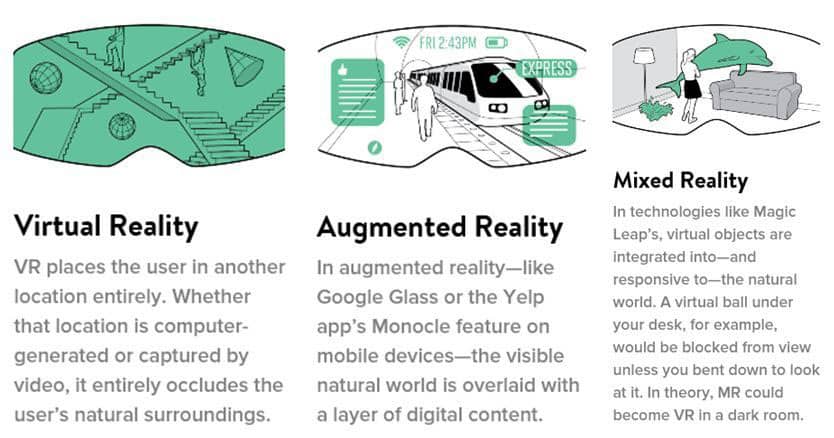
And what's VR?
The Matrix, a highly successful 1999 film about a deceptively plausible, augmented-reality future that was so indistinguishable from everyday life that the main characters originally assume that the simulation they are in is actual, heavily colored by most people's idea of virtual reality (VR).
Virtual reality is a simulation of an alternate world or reality created by a computer and mostly used in 3D films and video games. Using machines and sensory devices such as headsets and gloves, virtual reality creates simulations to block out the physical world and surround or "immerse" the audience. Virtual reality has also long used in training, education, and science, apart from games and entertainment.
Today's VR can make people feel like they're walking through a forest or conducting an industrial operation, but to get the experience, usually in games or avant-garde, movie-like "experiences," it almost always needs special equipment such as bulky headsets. And if you've ever attended a VR film festival, you know it always takes a lot of time, commitment, and help from the presenters before you can ca. For this purpose, for such items as Walmart employee training, high-end brand experiences, and in gaming and high-concept art fields, virtual reality is only just used.
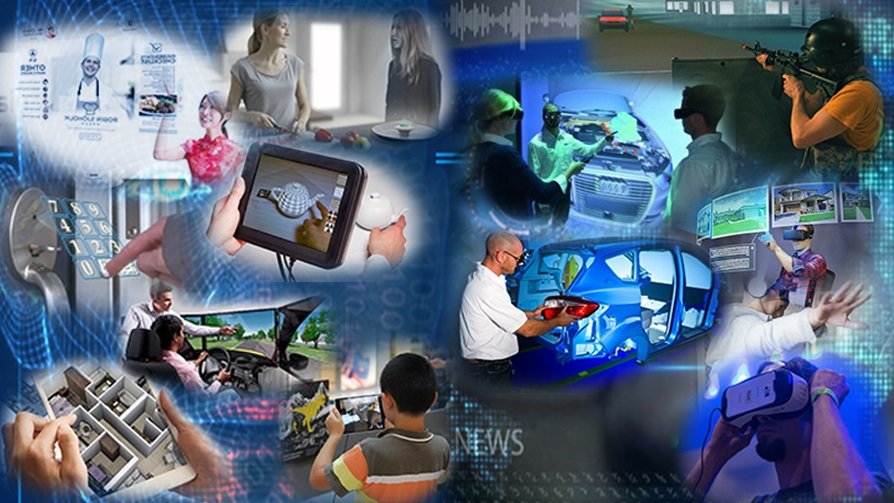
What does AR mean? The Most Famous Venues of Augmented Reality and virtual reality.
Augmented Reality (AR) is the cousin of VR and allows no pretense of virtual world development. AR accessed using far more common devices such as cell phones, unlike VR, and it superimposes images such characters on top of video or a camera viewer that are already accessible to most users, making it much more usable for shopping, sports, and movies.
AR combines the physical world with virtual elements created by computers. In reality, they then project these elements over physical surfaces within the field of vision of people, with the goal of merging the two to improve one another. Augmented reality uses a computer such as a mobile screen or a headset to insert or overlay content into the physical world. Whereas virtual reality replaces what individuals see and feel, it actually adds to augmented reality. VR fully blocks and replaces the field of vision of users, using devices such as HTC Vive, Oculus Rift, and Google Cardboard, while AR projects images in a fixed area in front of them.
Let's look at some recent examples via VR and AR of interesting customer experiences.
Using VR in promotional campaigns: How to use virtual reality for a better experience for consumers
Toms, a shoe company known for its social mission and philanthropy, found the One for One® initiative, by donating a pair of shoes to a child in need for each pair of shoes purchased (at 60 million and counting). But it was still a struggle to express the true impact of their purchases to customers. Toms used VR to construct an immersive environment that shared the genuine sense of its social mission for shoppers in stores. To create a movie called, "A Walk In Their Shoes," they used virtual reality to chronicle the journey of a skateboarder who goes to Colombia to meet the child who receives the free pair of Tom's shoes instigated by his purchase.
It's a touching story, shot in a small town in Colombia's streets and alleys, showing how the donated shoes help shield the feet of children from broken glass and garbage. In order to get a better feel for the trip, the 360-degree video allowed viewers on computers and phones to rotate the picture in all directions. It is intense and emotional, the dream of a marketer, and a highly productive use of technology.
IKEA recently launched an immersive VR experience called IKEA Place in a completely different vein, which enables clients digitally remodel and redecorate their kitchens or living rooms with over 2,000 furniture pieces. Michael Valdsgaard, the company's Digital Transformation boss, says, "You see the scene as if these objects were real and you can walk around them and communicate with them, even leave the room and come back." Experiencing it is truly magical. Users may communicate with different furniture and other object configurations, as if they were actually standing in the rooms. To imagine various combinations, they can edit or adjust the colors and patterns, deciding precisely which look they want before they purchase.
Automotive firms are also perking up their ears. In order to give car shoppers a completely immersive test drive experience using a smartphone and Google Cardboard headset, Volvo created an entire VR app called Volvo Reality. Volvo Reality puts shoppers in the driver's seat and takes them on a trip across the world, removing the need for shoppers to physically walk into a dealership to experience the XC90 SUV. Other car firms, such as Audi, are following suit, with 1,000 VR showrooms.
A new Diesel marketing campaign for virtual reality may include some startling clues about how to use VR for marketing. Created for the Diesel brand of L'Oréal and titled "The Edge," it provided Diesel's appropriately called "Only the Brave [fragrance] for Men" with a VR experience.
"The physical installation comprises a small, specially configured floor and two walls that provide haptic (touch) sensations to match the 360-degree customer experience created by software that viewers see in their VR headsets: they are up on a narrow, unstable skyscraper ledge that is rapidly crumbling, and they need to inch along the ledge to a window where they can grab the fragrance "Only the Brave They see other buildings everywhere they look, many below them. And software-controlled fans blast wind over the Brave's ears, rendering it an additional ledge-like experience.
Many of these experiences are not inexpensive to introduce, and the fun Saturday-at-the-mall-with-The-Edge of one person is another's nightmare never-in-a-million-years. Such interactions need to highly targeted at segments that will enjoy, appreciate, and identify with the shops and brands that supply them.
But customization technology, which helps figure out the behavioral trends and desires of consumers, may also play a significant role in targeting the right prospects for costly VR displays.
Customer Data Can Help VR/AR marketing promotions target shoppers
One way to match the customer to the right customer experience—efficiently and effectively—is to use technology, such as customer data platforms, to develop accurate, complete behavioral profiles. Some thrill-seeking clients would earn the scary VR promo, while the more risk-averse will get an offer for a motive smartphone app. But everyone gets the deals and experiences that they will most definitely enjoy.
Marketing Use of AR: How Virtual Reality Allows Advertisers to Boost Sales
The first mainstream market splash for augmented reality was Pokemon Go, which debuted in 2016. The wildly successful game used location tracking and cameras on its users' smartphones to enable them to visit public landmarks in search of virtual loot and collectible characters, the purpose of which was to catch monsters. The true genius of the game may have been its ability to bring players out of the door and take part in the physical world again, proving to be immensely addictive and a powerful force for promotion and add-on revenue from ads.
More recently, Walmart and Lego have offered an app to let customers see how different Lego toys once assembled would look and behave. So you can check the barcode for an unassembled Lego Star Wars toy, for instance, and watch it clash with other toys in the set, and the entire battle looks like it's on the floor of the kiosk right there.
Many other companies create augmented reality technologies, mostly in training applications, such as aviation, transportation, healthcare, and tourism, to name a few.
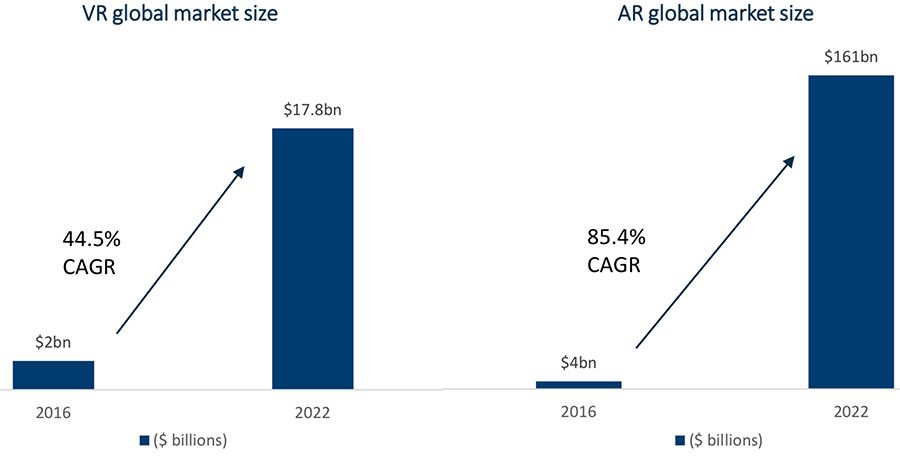
Companies are always searching for fresh and innovative approaches to attract customers, and AR and VR are proving to be effective tools for storytelling, product visualization, and user interaction, along with personalization technologies such as CDPs. Using these marketing innovations is still in its infancy and they are looking for groundbreaking advances in 2020 and beyond, considering their immense potential. For augmented reality and virtual reality, these developments signal an exciting time, with the potential for AR and VR to become an exciting part of many customer journeys.

What would you do if you had a plot of metaverse land? Please get in touch with us.
You should also check out the following articles:
- What is the metaverse? and how does it work?
- A meta market opportunity: The metaverse could soon be worth $1 trillion
- Facebook wants to build a metaverse. Microsoft is creating something even more ambitious.
- How to succeed in the virtual reality world of tomorrow?
- Books you must read about virtual reality
- Best New Augmented Reality Books To Read In 2021
- US$ 4.7 Billion- The global augmented reality gaming market
- The smart glasses revolution is about to get real
- Consumer Brands Reinventing Marketing in the Metaverse
- Imagine Making Money in Rec Room
You should also check out the following articles:
- BEST VR GAMES 2021
- PLAYSTATION VR 2 ALL THE LATEST PSVR 2 RUMORS
- Imagine Making Money in for playing vr
- UPCOMING VR GAMES 2022
- VR EXERCISE GAMES CAN HELP YOU WORK OUT IN YOUR OWN HOME
- Grand Theft Auto: San Andreas will be available in virtual reality.
- Sam & Max VR
- 5 VR Games You’ll Want on Your Radar for 2022
- You haven't experienced Microsoft Flight Simulator until you've used an Oculus Quest 2 headset.
- Resident Evil 4 VR
Subscribe now to our YouTube channel
Subscribe now to our Facebook Page
Subscribe now to our twitter page
Subscribe now to our Instagram
Subscribe To my personal page on linkedin
Subscribe To my personal page on tiktok page for those who love to dance :)
Want to know what else is going to be in the coming years? Follow me. Follow the future. Sign up for my friend's letter.


